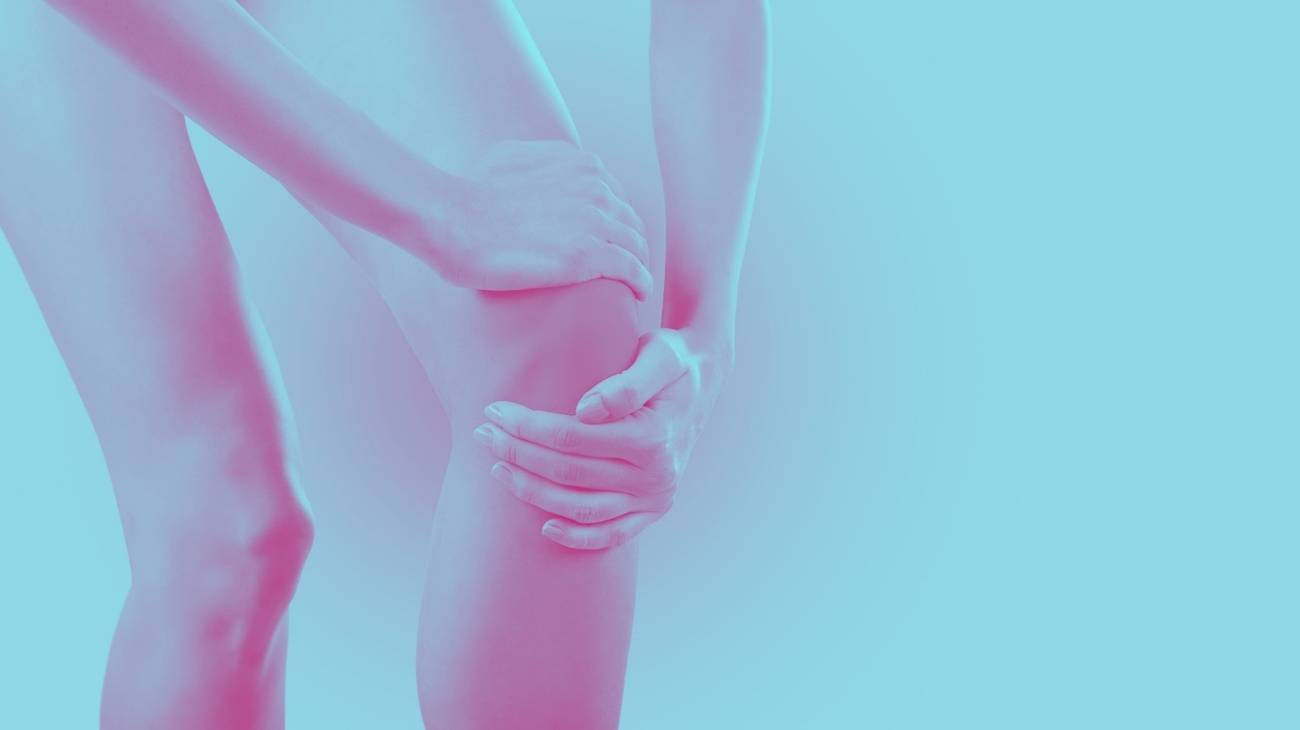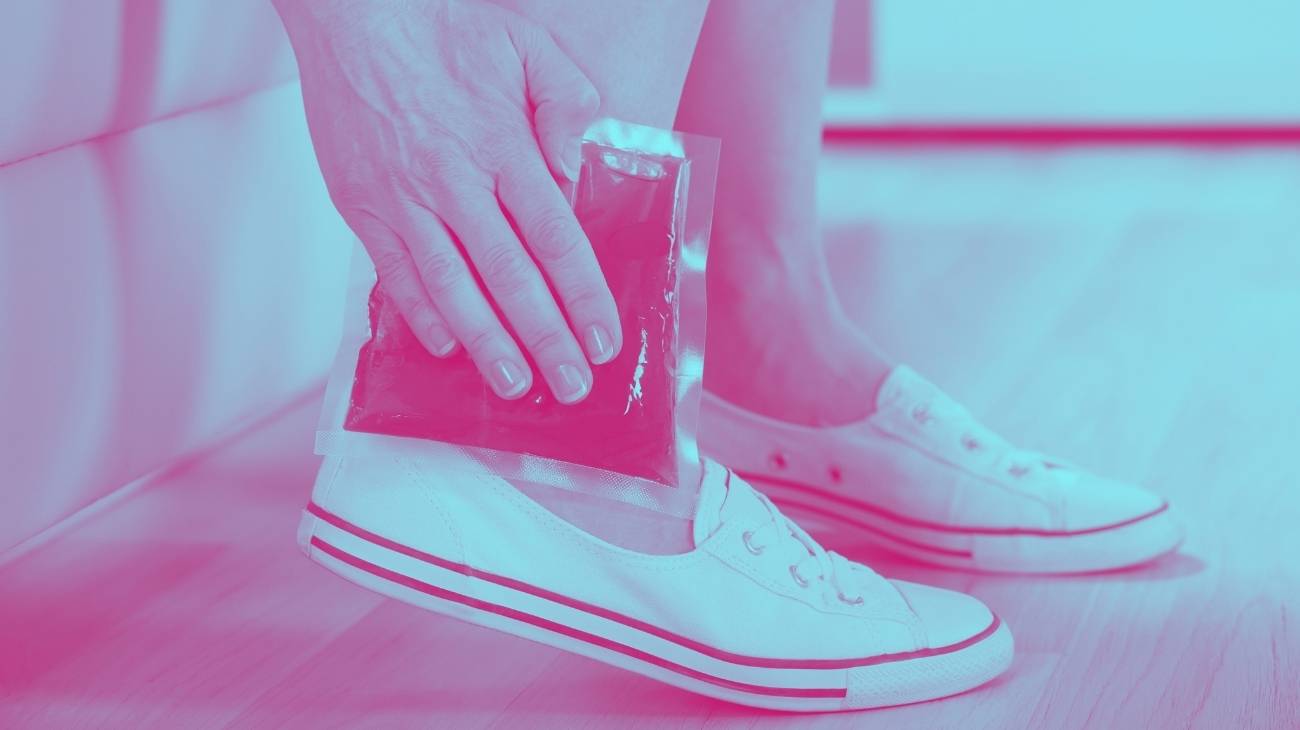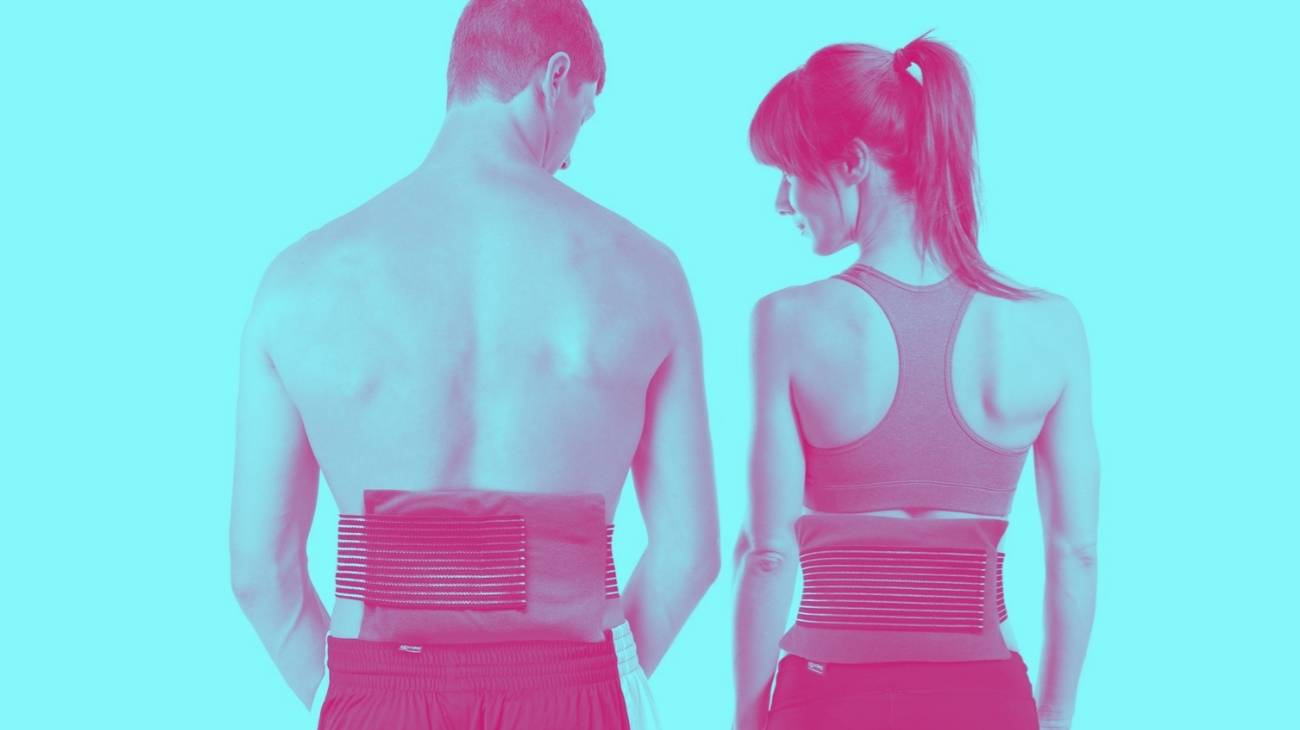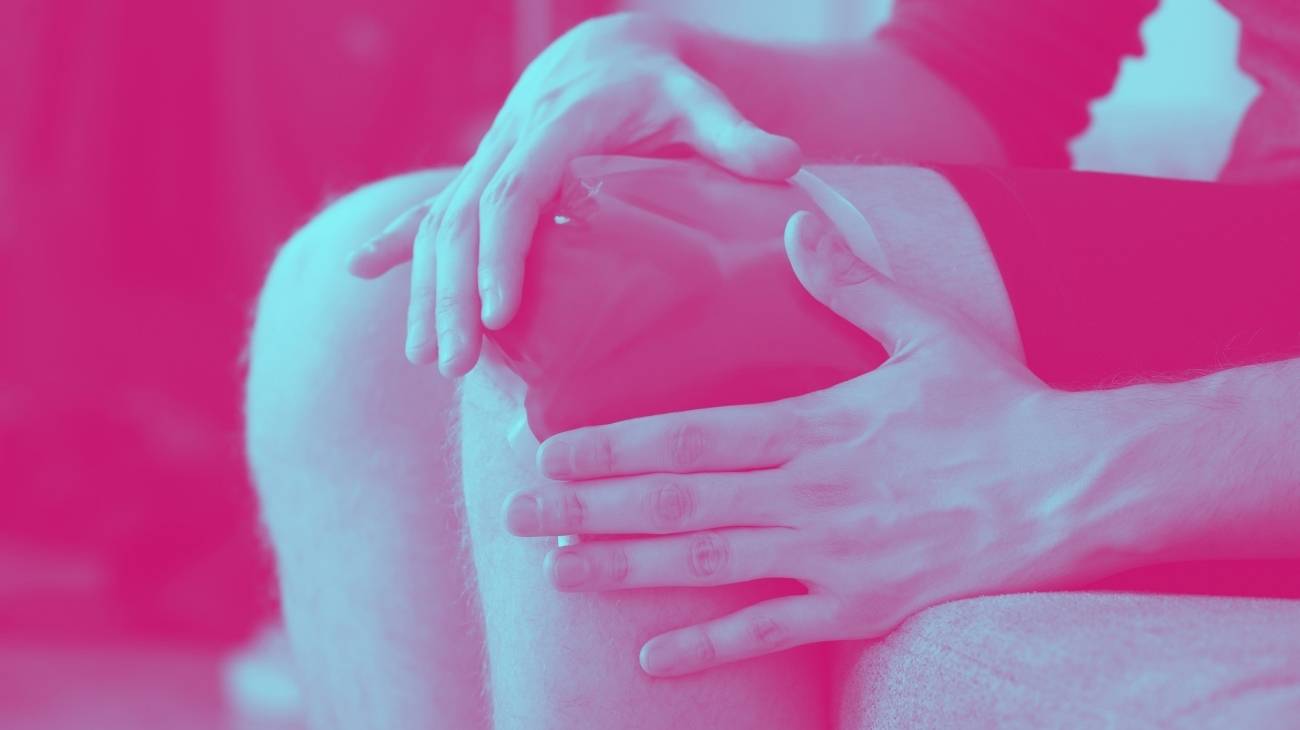- What is the best ice gel pack for carpal tunnel?
- Video: How to use hot and cold gel packs?
- Types of hot & cold packs you should know about
- What are the causes of hand and wrist pain due to carpal tunnel syndrome?
- Benefits of ice gel packs to reduce carpal tunnel syndrome
- How can you use ice gel packs to relieve inflammation in the wrist and hand?
- The best hot and cold gel packs for pain relief
Carpal tunnel syndrome is a condition caused by entrapment or compression of the median nerve. It mainly affects the hand and forearm and is manifested by symptoms such as pain, numbness and tingling.
Therefore, we would like to inform you about the causes of this disease and its treatment with cryotherapy. If you want to know how to use hot and cold gel packs to relieve carpal tunnel pain in the wrist, read on.
What is the best ice gel pack for carpal tunnel?
- Heat/cold therapy
- Quality adjustable strap
- Not microwave safe
Its straps and ergonomic design do not deform during use, maintaining its position throughout the treatment. This increases comfort and makes it easier to treat symptoms of tendonitis, bursitis and trauma. Heat the pad in the microwave or cool the heat pack in the refrigerator to place on sensitive areas to reduce inflammation. In some cases, the duration of the temperature may not be long enough.
- 2 Units per order
- Protective cover
- Hot/cold therapy
- Adjustable strap
- Not very flexible after freezing
- Not microwaveable
The medical gel pad can be used for meniscus inflammation, patellar tendon rupture and ligament irritation. It is necessary to heat in the microwave or refrigerate in the fridge the filling in the removable package until the desired temperature is reached. Then, you will have to place it in the sleeve and adjust the straps so that the compression improves blood circulation. In some patients the effects were poor due to the lack of support to see the product in the sensitive areas.
- Material: Nylon
- Uses: Back, Ankle, Knee, Shoulder
- Adjustment Type: Velcro Strap
- Cover: Yes
- No. of units: 1 Gel Pack
- Hot/cold therapy
- Adjustable Velcro strap
- Microwaveable
- Good flexibility
- Short-lasting heat therapy
- Delicate wash
Arthritis, golfer's elbow syndrome and inflammation from trauma can be easily treated with this recovery support . Place in the refrigerator or freezer to get the temperature you're looking for and then place it on the side of your elbow to help you recover faster. Sweat buildup can be uncomfortable for some users and cause shifting during use.
- Material: Nylon
- Uses: Various body areas
- Type of adjustment: Velcro strap
- Cover: Yes
- No. of units: 2 Gel Packs
- Adjustable Velcro strap
- 2 Units per order
- Bulky design
By simply placing it in the microwave or freezer, according to your needs, you will achieve the ideal combination to combat radial tunnel syndrome, tennis elbow and bursitis. The medical gel packs are reusable, but keep in mind that for best results you will need to use it with a compression sleeve, which may be ineffective for some users.
- Material: Nylon
- Uses: Various body areas
- Type of adjustment: Velcro strap
- Cover: Yes
- No. of units: 2 Gel Packs
- Microwave safe
- Hot/cold therapy
- Quality materials
- Adjustable Velcro strap
- Medium flexibility with cold therapy
- Delicate wash
If you are looking to shorten recovery time from injury, you can use this adjustable thermal elbow pad on a daily basis by simply getting the pads to the required temperature by placing them in the microwave or refrigerator. Compression therapy can also be applied to the elbow with this versatile product, as its adjustable straps will help you find the ideal pressure to stimulate blood circulation. During use, they may cause discomfort by slipping on the arm.
Video: How to use hot and cold gel packs?
Types of hot & cold packs you should know about
What are the causes of hand and wrist pain due to carpal tunnel syndrome?
The carpal tunnel is a narrow passage in the wrist made up of bones and ligaments. It is crossed by the flexor tendons of the fingers and the median nerve. This nerve is responsible for feeling in the fingers (except the little finger) and for controlling the muscles at the base of the thumb.
Carpal tunnel syndrome is an injury characterised by pain, numbness, weakness and tingling in the hand and forearm. It occurs when the median nerve in the carpal tunnel is compressed or pinched.
However, in most cases, the injury is due to a combination of several of the following risk factors associated with carpal tunnel syndrome:
- Genetic inheritance: Some people have narrower carpal tunnel than normal or have anatomical features that reduce the space for the median nerve. These features can be inherited.
- Repetitive activities: Activities that involve repetitive or forceful manual manoeuvres over long periods of time or cause microtrauma. These can create increased pressure on the median nerve. The frequent use of vibrating tools is highlighted as a risk factor here.
- Pregnancy and menopause: During these periods there is increased water retention, which can increase pressure in the tunnel.
- Rheumatic or inflammatory diseases: This is the case with rheumatoid arthritis, which can inflame the synovial membrane of the flexor tendons, putting pressure on the median nerve.
- Depositional diseases such as amyloidosis and mucopolysaccharidosis: these lead to abnormal accumulation of proteins in the body and are often associated with carpal tunnel syndrome.
- Diseases that lead to nerve damage: Chronic diseases such as diabetes increase the risk of nerve damage, especially to the median nerve.
- Medications: This injury can be caused by taking certain medications. These can include aromatase inhibitors (anastrozole), oral anticoagulants and bisphosphonates used to treat osteoporosis.
- Fracture, dislocation or deformation of the wrist bones: This can change the spacing and increase pressure on the median nerve.
- Obesity: Overweight people are more prone to this condition.
- Gender: This injury affects more women than men. This may be because the female carpal tunnel is usually smaller than the male carpal tunnel.
- Age: This syndrome is more common in people between the ages of 30 and 60.
It should be noted that this injury can be treated in the early stages with simple measures such as immobilisation of the wrist, corticosteroid infiltration, rest and cold therapy. However, if not treated in time, symptoms may worsen and surgery may be required.
Benefits of ice gel packs to reduce carpal tunnel syndrome
Cold therapy is recommended for the treatment of carpal tunnel syndrome. This method is particularly effective in relieving pain and inflammation. You can use a hot-cold gel pack like the ones we offer for this purpose.
Below we explain the main advantages of cryotherapy in the treatment of carpal tunnel syndrome:
- Anti-inflammatory effect: Cold causes the blood vessels to narrow, a process called vasoconstriction. This leads to a reduction in blood flow, which reduces and prevents inflammation. In addition, some studies claim that low temperatures promote the presence of anti-inflammatory agents and reduce the level of inflammatory substances.
- Analgesic effect: Cryotherapy can significantly reduce pain. On the one hand, it numbs the nerves by reducing the transmission of nerve impulses that indicate pain. Indeed, cold can relieve pinched nerves, which is crucial in the case of carpal tunnel syndrome. In addition, low temperatures relieve pain associated with swelling due to their anti-inflammatory effect.
- Relieving muscle spasms: cold has a relaxing effect that relieves muscle tension. It is therefore able to reduce spasticity or muscle spasms.
How can you use ice gel packs to relieve inflammation in the wrist and hand?
Hot and cold gel packs are ideal packs for cryotherapy or heat therapy. The best thing about them is that they can reach both high and low temperatures and fit comfortably on the body.
It is worth noting that some of our products are equipped with compression straps to ensure maximum adaptation to the injured area. They also have a protective cover that prevents direct contact with the skin and provides maximum comfort during use.
Using cold gel pads to relieve carpal tunnel pain is very simple, just follow these steps:
- Put the pack in the fridge or freezer for two hours.
- After this time, take the pack out of the fridge and check the temperature. Depending on what you plan to do, cool it further, leave it outside to warm up a bit, or move on to the next step.
- Place the pack on the appropriate wrist for about 20 minutes.
- You can adjust it with the compression strap that comes with our packs, but don't make it too tight. Remember that we are trying to reduce the pressure on the median nerve.
- It is recommended that this procedure be done 3 to 4 times a day for the first 3 days after the injury.
You then need to immerse your hand in cold water for a further 15 seconds. This process can be repeated for 3 minutes. Another way to relieve carpal tunnel pain in the wrist is to do a heat massage or self-massage for at least 5 minutes per session.


































